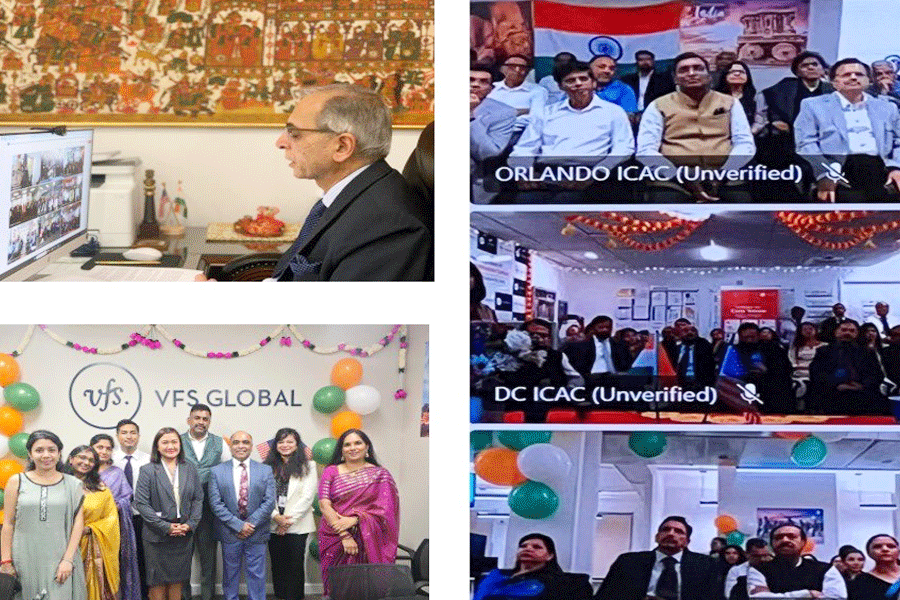 |
| Pav bhaji sellers in Siliguri are facing mounting competition from fast-food eateries specialising in Tibetan and Chinese delicacies. Picture by Avijit Sarkar |
Siliguri, Oct. 24: Singara and misti are passé, the people are busy tucking into a slice of Tibet.
With the mushrooming of fast-food stalls and thhelawallahs selling sundry delicacies, ranging from phuchkas to momos, a new culture has crept in, redefining its inherent cosmopolitan personality.
While momo and chowmein (the derivatives of the original Tibetan and Chinese dishes respectively) have become the latest favourites, conventional delicacies like phuchkas, pav bhajis and bhel puri sell no less.
Says Utsav Chatterjee, manager of Bombay Stores, one of the most happening fast-food outlets whose USP is its mouth-watering pav bhaji: “Chinese dishes are becoming increasingly popular among the 1,500 customers we get everyday and is giving good competition to the desi snacks.”
Though eating-out in itself is a new concept here, the idea of fast-food has also registered a sharp rise. Even the big hotels admit that though their main-course meals remain the main attractions, there has been a rise in the demand for snacks and fast-food items. “Siliguri’s geographic location and cultural mix being unique, we see a lot of variety in the food habits. Though our restaurants are not strictly meant for fast-food, we do have people hopping in in large numbers, who love to enjoy snack items like kebabs and tikkas. Our Chinese range of cuisine is doing extremely well,” says an official at Sinclairs.
However, sophisticated interiors, dim lights, forks and knives are not what make fast food really fast and trendy. The real mazaa is in the road-side eateries and the thhelawallahs who do the real business. Says Bappa, who sells about 4,000 pieces of momo on an average every day from his stall at Seth Srilal, which has a row of momo kiosks targeting the vegetarian crowd: “I have been in the business for almost six years. Earlier, maybe because very few people knew what momo was, I had few customers. But now my customer base has increased so much that it becomes really tough to handle.”
Interestingly, just a month ago, a garments store in the area closed down to give place to a momo and chowmein stall.
Reflecting the changing taste among the people, it is momo that has become the backbone of most fast-food eateries in the town. This — originally Tibetan, later “re-mixed” to suit individual taste — dish is one single item that has generated many employment opportunities among the unemployed with no capital to invest. Originally a non-vegetarian dish, momo has been customised to suit the common taste, much like chowmein full of masala and garnished with onion and cucumber. Among the inventions, paneer momo is hugely popular.










